This post may contain affiliate links. For more information, please see our affiliate policy.
Here’s everything you need to know about peeling and cutting Butternut Squash, a versatile vegetable perfect for dinner or your holiday menu.
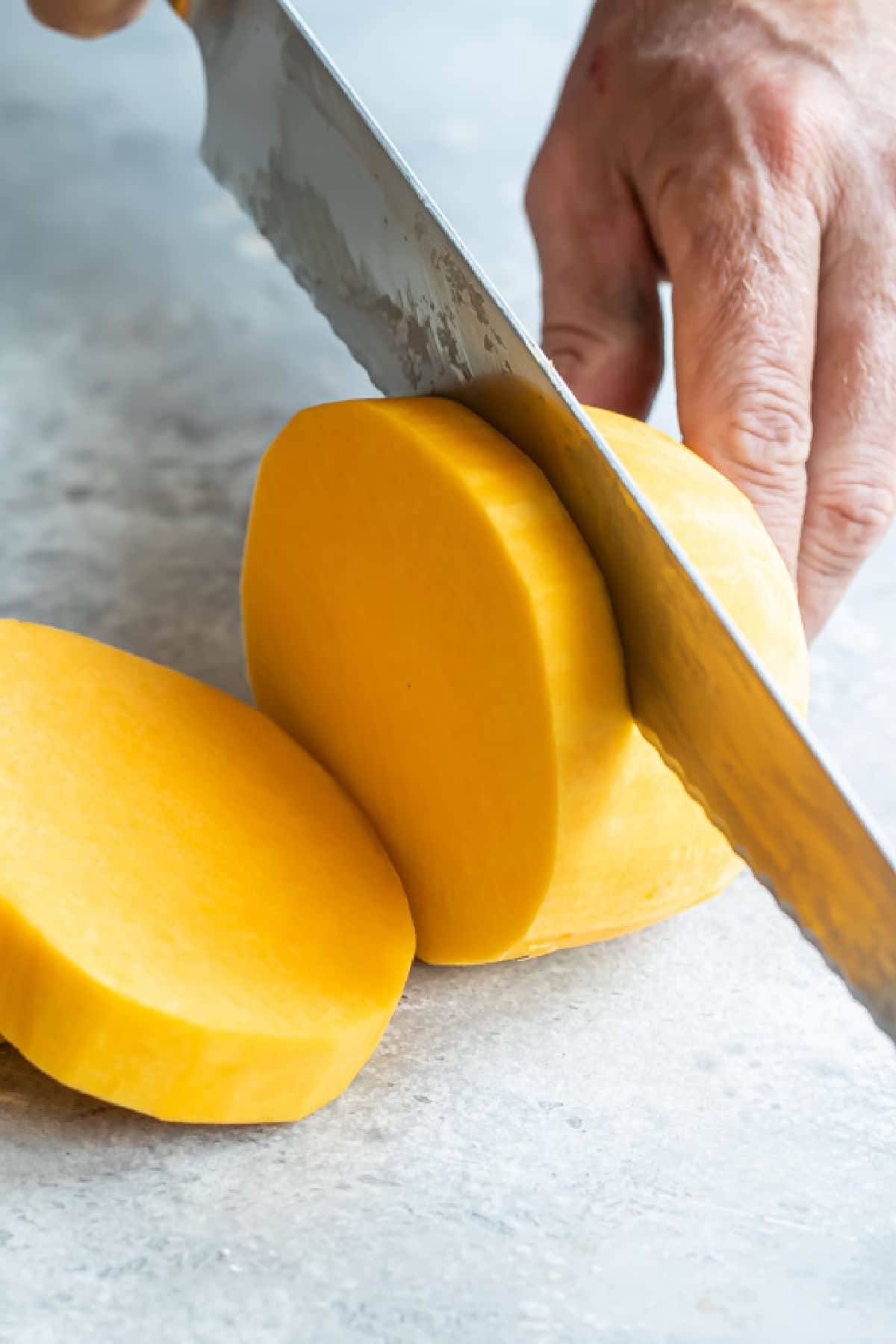
Tutorial notes
- Seasonality: You can find butternut squash year-round, but it’s best in early fall through winter.
- Buying: Choose a butternut squash that is firm to the touch and doesn’t have any soft spots (a dark spot from where it was resting in a field is fine). It should feel heavy for its size.
- Storage: Do not refrigerate whole butternut squash. Store it in a cool, dark place (like you would potatoes). it will keep for up to a month. Peeled butternut squash can be store covered in the refrigerator for up to 5 days.
- Uniform size: When cutting squash, make sure that the pieces are all about the same size, so they cook evenly. If you plan to roast the butternut squash, aim for bite-sized 1 1/2-inch pieces.
- Roast the halves: If you’re making mashed or puréed squash, cut the squash in half, rub the sides with olive oil, season with salt and pepper, and roast cut-side down for 45 minutes to 1 hour. For more information, see my tutorial on How to Cook Spaghetti Squash (it works the same way).
- Yield: One 2-pound butternut squash will yield about 6 cups raw diced squash (when roasted, you’ll have about 4 cups).
Step-by-step instructions
- Squarely cut the bottom and top off of the squash. For stability, you want the squash to be flat on both ends.
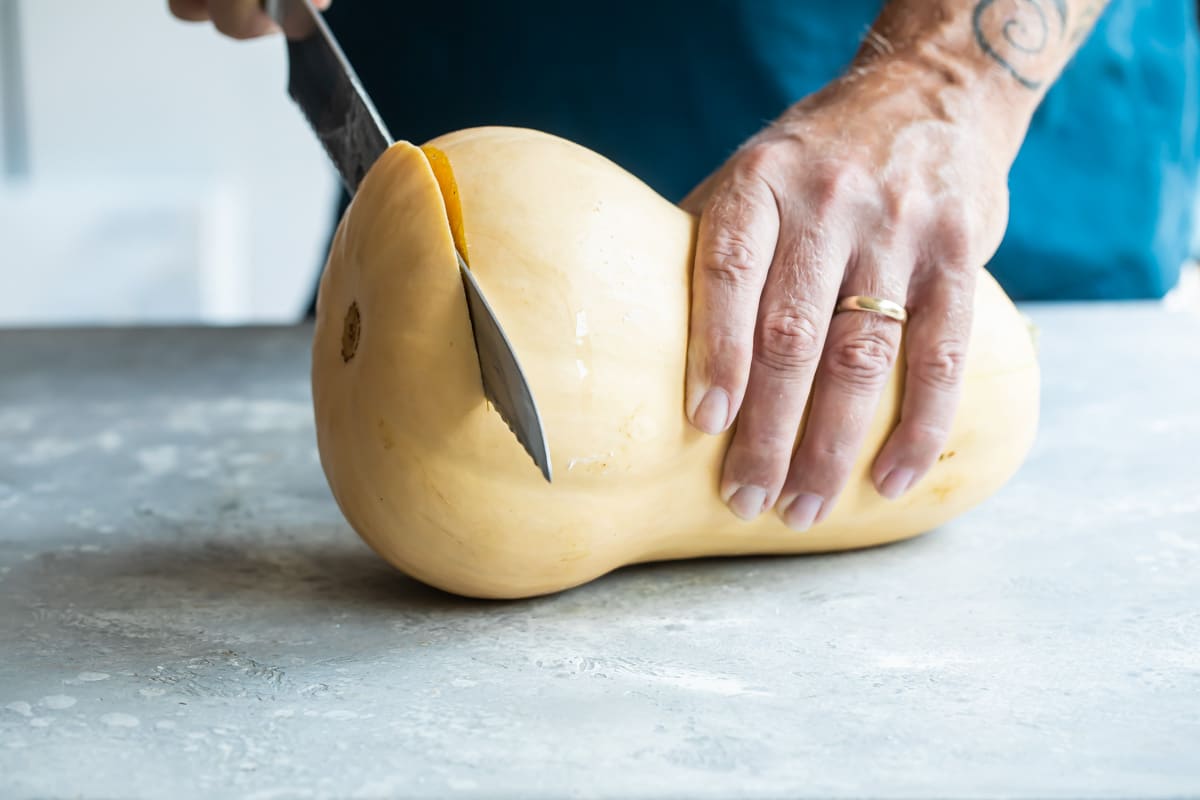
- With a serrated vegetable peeler, peel the skin. Make sure to peel any green lines away that you find under the skin.
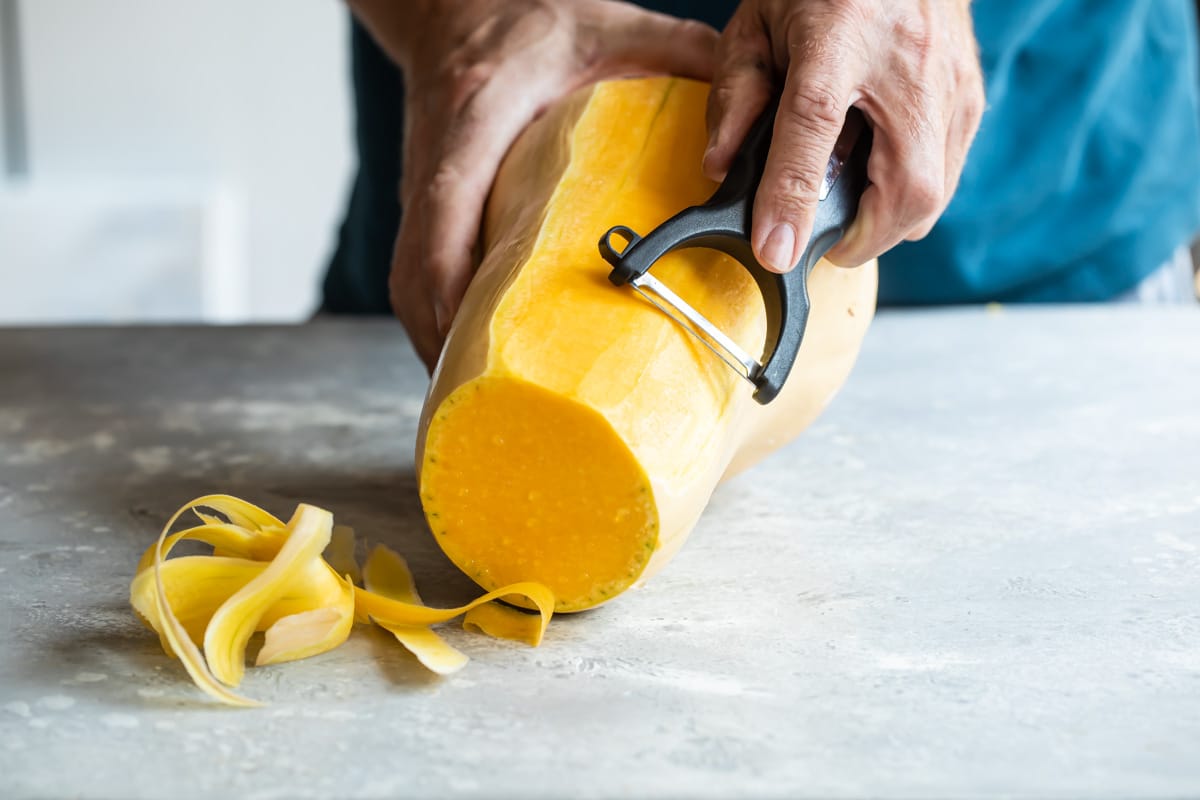
- Cut the squash in half, right where the squash begins to flare out. You’ll be left with one oblong half and one round half.
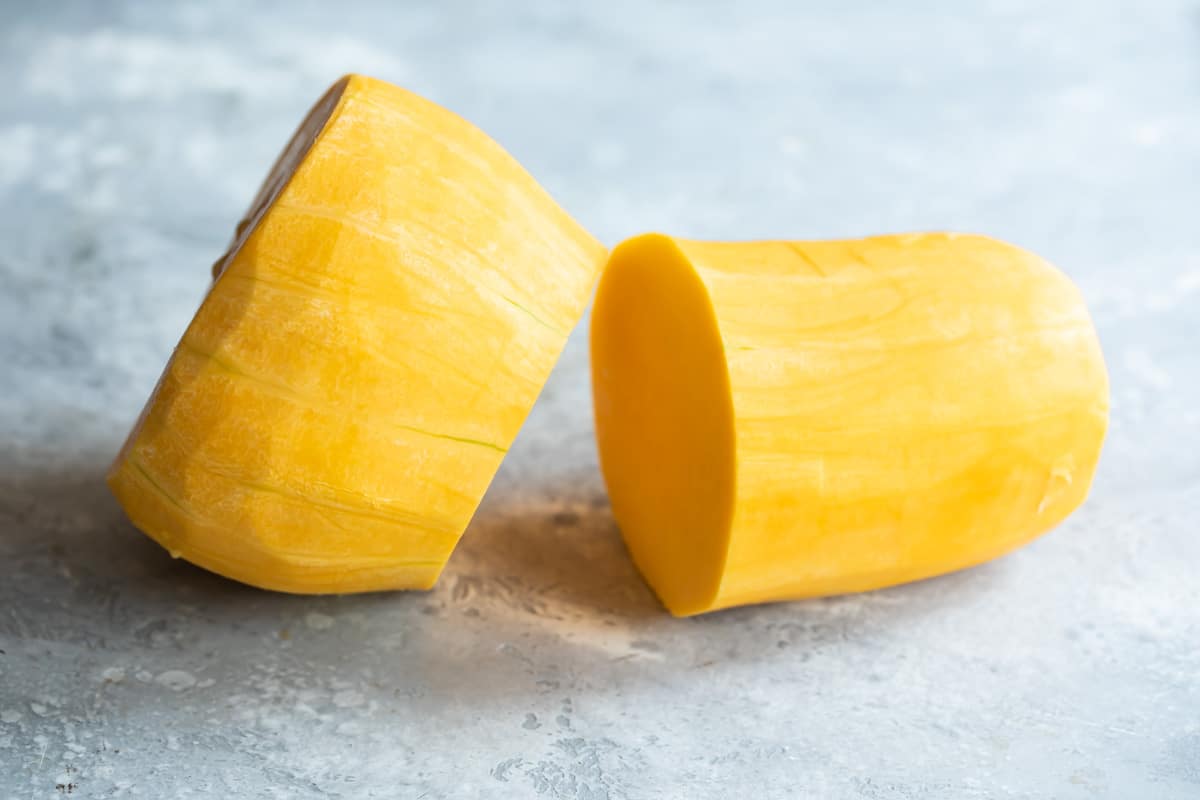
- Cut the round half of the squash in half to reveal the seeds. Scoop these out with a spoon and discard, or reserve for another use. Cut the round half into thick slices.
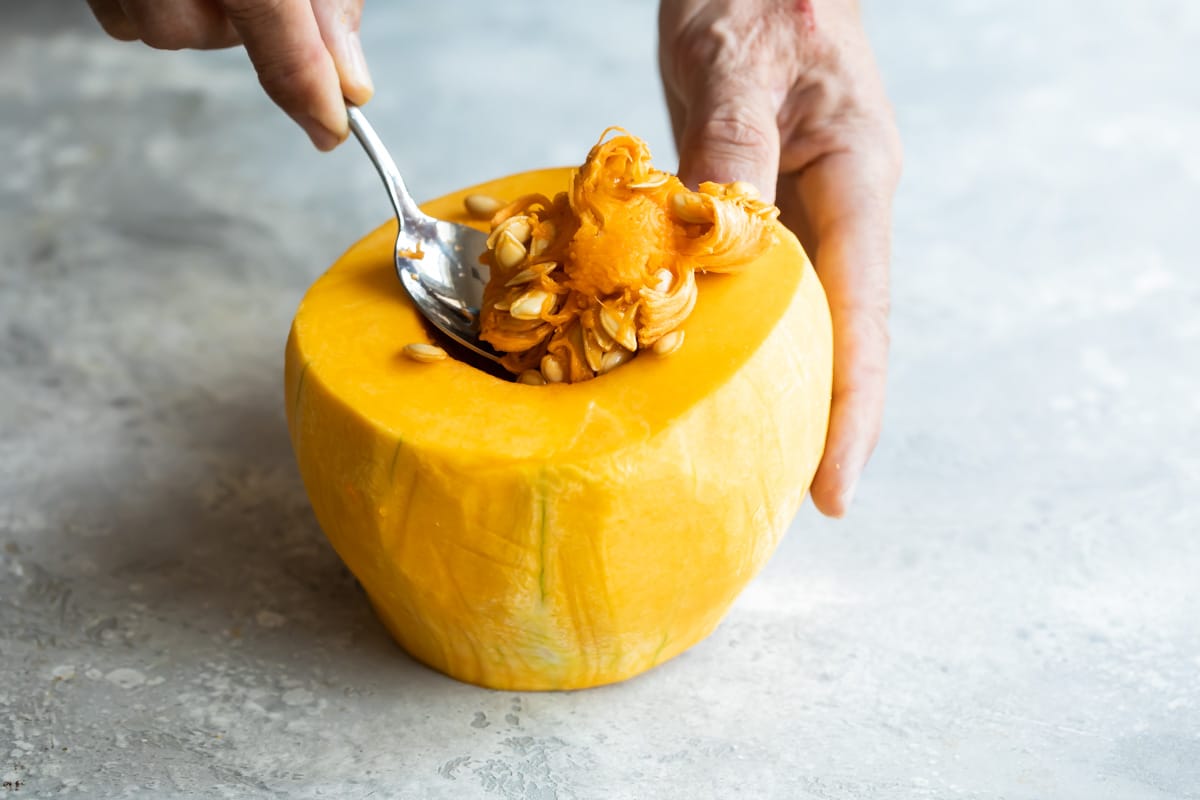
- Cut the oblong half into thick slices, too.
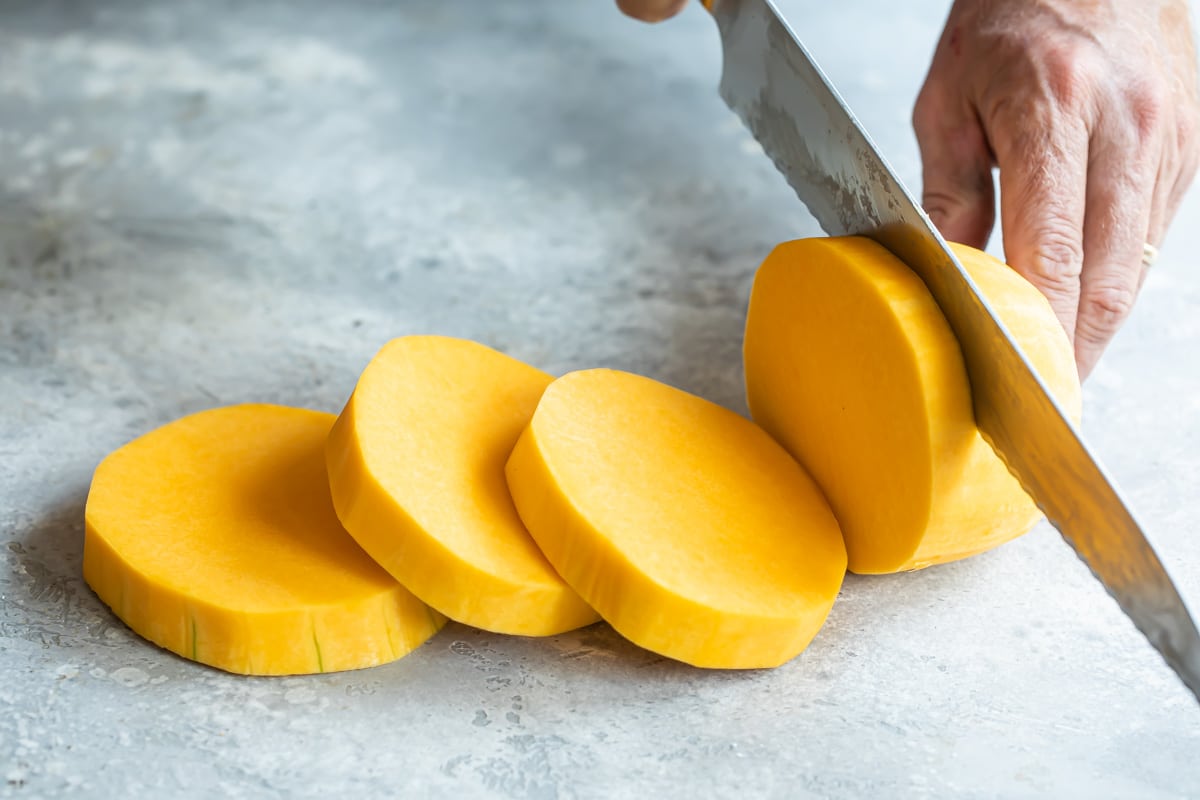
- Cut all thick slices of squash into pieces.
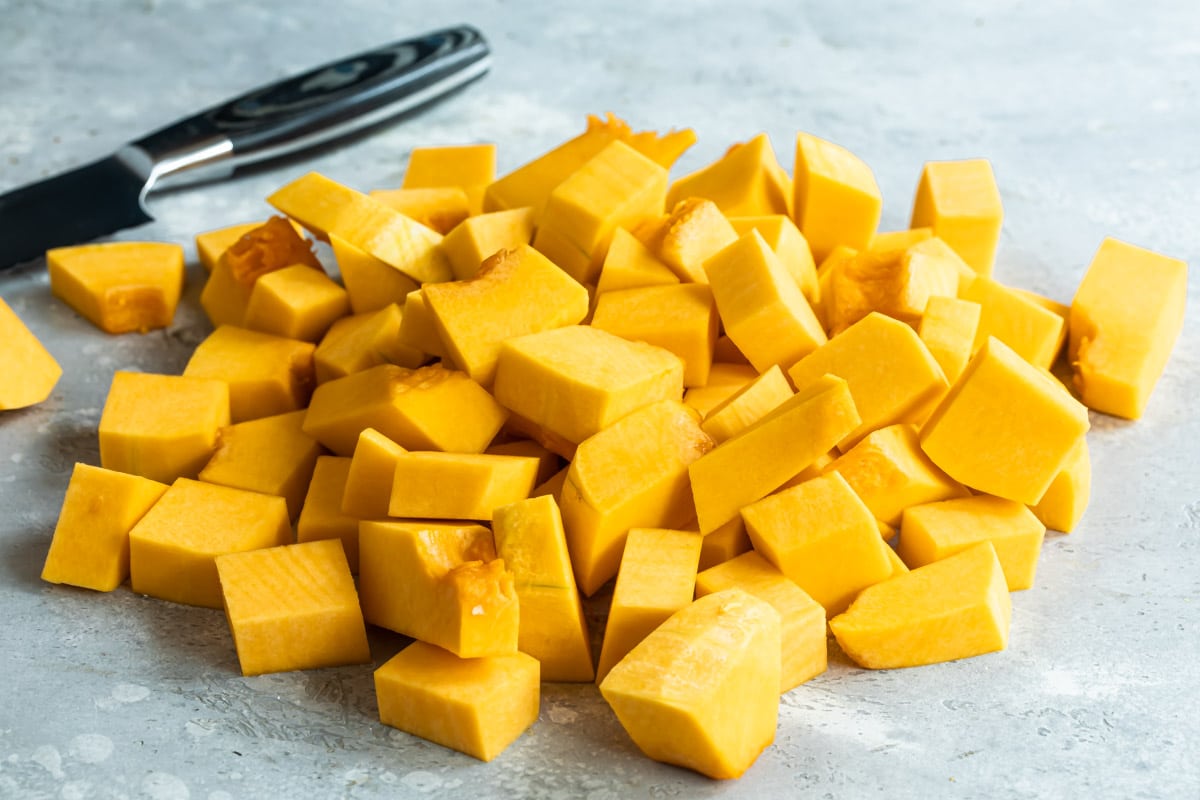
Roasted Butternut Squash
Oven Roasted Butternut Squash makes a delicious side dish any night of the week or on your holiday table. Or, meal prep a batch to toss into salads and grain bowls all week long.
View RecipeDelicious roasted vegetables
Vegetable Recipes
Roasted Broccoli
Vegetable Recipes
Roasted Cauliflower
Vegetable Recipes
Roasted Green Beans
Vegetable Recipes
Roasted Asparagus Recipe
Join Us
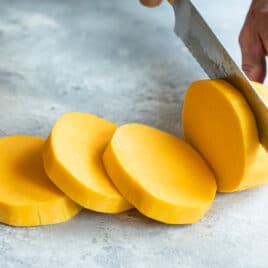
How to Cut Butternut Squash
Ingredients
- 2 pounds butternut squash (1 large)
Instructions
- Squarely cut the bottom and top off of the squash. For stability, you want the squash to be flat on both ends.
- With a serrated vegetable peeler, peel the skin. Make sure to peel any green lines away that you find under the skin.
- Cut the squash in half, right where the squash begins to flare out. You'll be left with one oblong half and one round half.
- of the squash in half to reveal the seeds. Scoop these out with a spoon and discard, or reserve for another use. Cut the round half into thick slices.
- Cut the oblong half into thick slices too, then cut all thick slices of squash into pieces.
Notes
- Seasonality: You can find butternut squash year-round, but it’s best in early fall through winter.
- Buying: Choose a butternut squash that is firm to the touch and doesn’t have any soft spots (a dark spot from where it was resting in a field is fine). It should feel heavy for its size.
- Storage: Do not refrigerate whole butternut squash. Store it in a cool, dark place (like you would potatoes). it will keep for up to a month. Peeled butternut squash can be store covered in the refrigerator for up to 5 days.
- Uniform size: When cutting squash, make sure that the pieces are all about the same size, so they cook evenly. If you plan to roast the butternut squash, aim for bite-sized 1 1/2-inch pieces.
- Roast the halves: If you’re making mashed or puréed squash, cut the squash in half, rub the sides with olive oil, season with salt and pepper, and roast cut-side down for 45 minutes to 1 hour. For more information, see my tutorial on How to Cook Spaghetti Squash (it works the same way).
- Yield: One 2-pound butternut squash will yield about 6 cups raw diced squash (when roasted, you’ll have about 4 cups).
Nutrition
Meggan Hill is a classically-trained chef and professional writer. Her meticulously-tested recipes and detailed tutorials bring confidence and success to home cooks everywhere. Meggan has been featured on NPR, HuffPost, FoxNews, LA Times, and more.
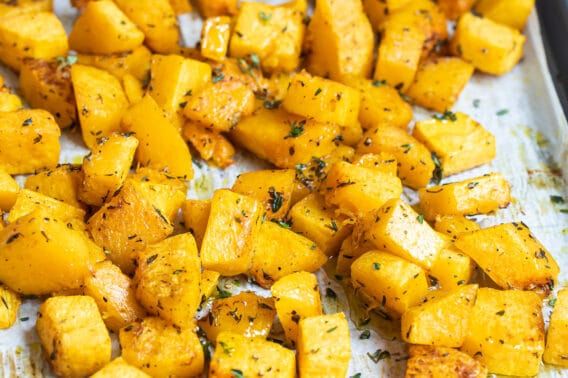
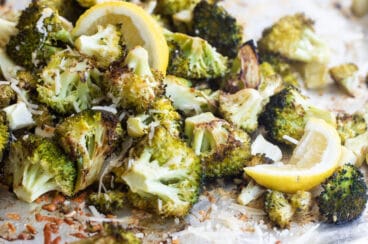
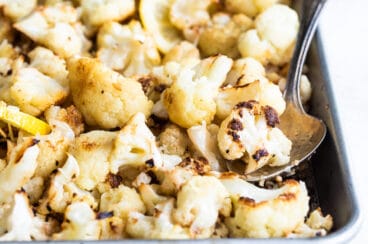
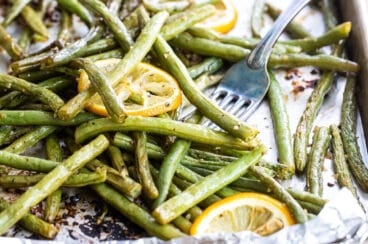
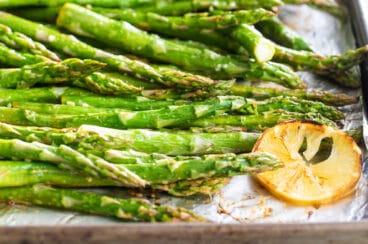
Thanks for this. Btw, microwaving your butternut squash for a minute or two really makes peeling easier!